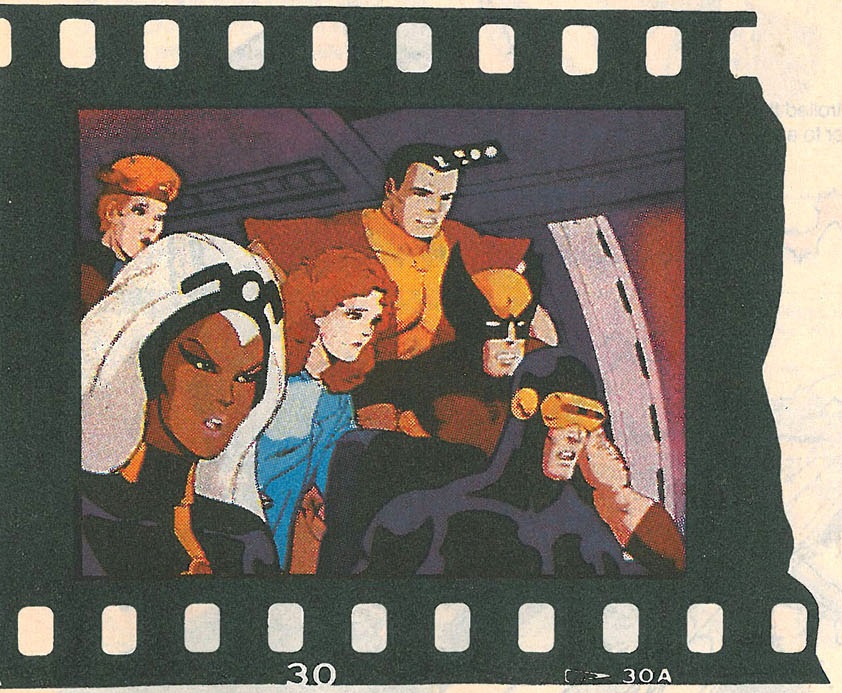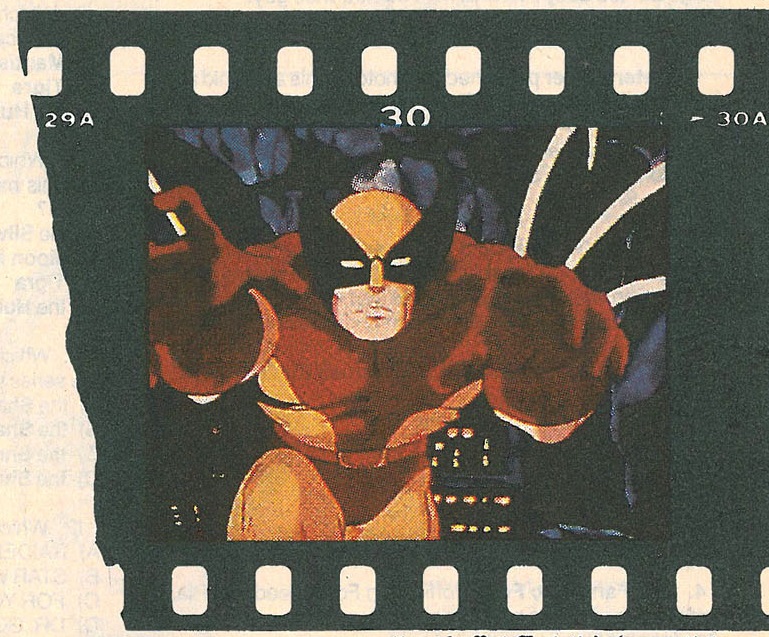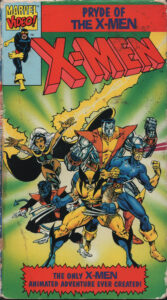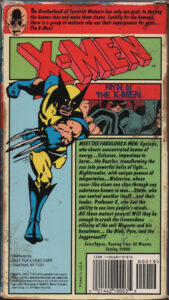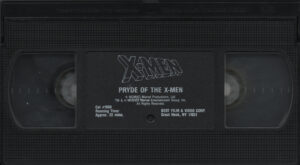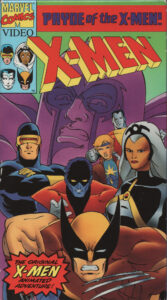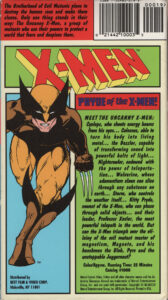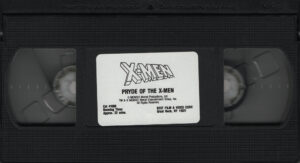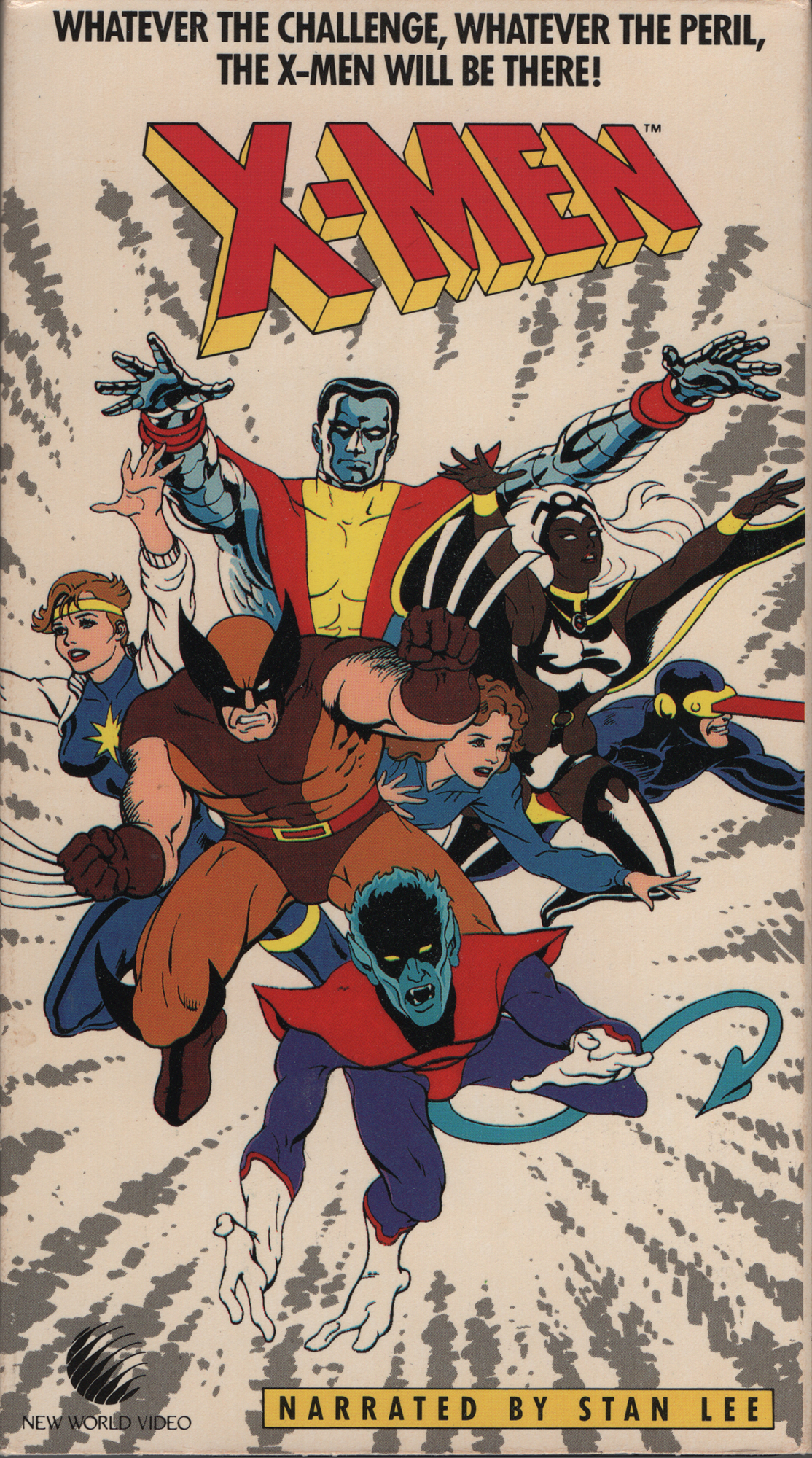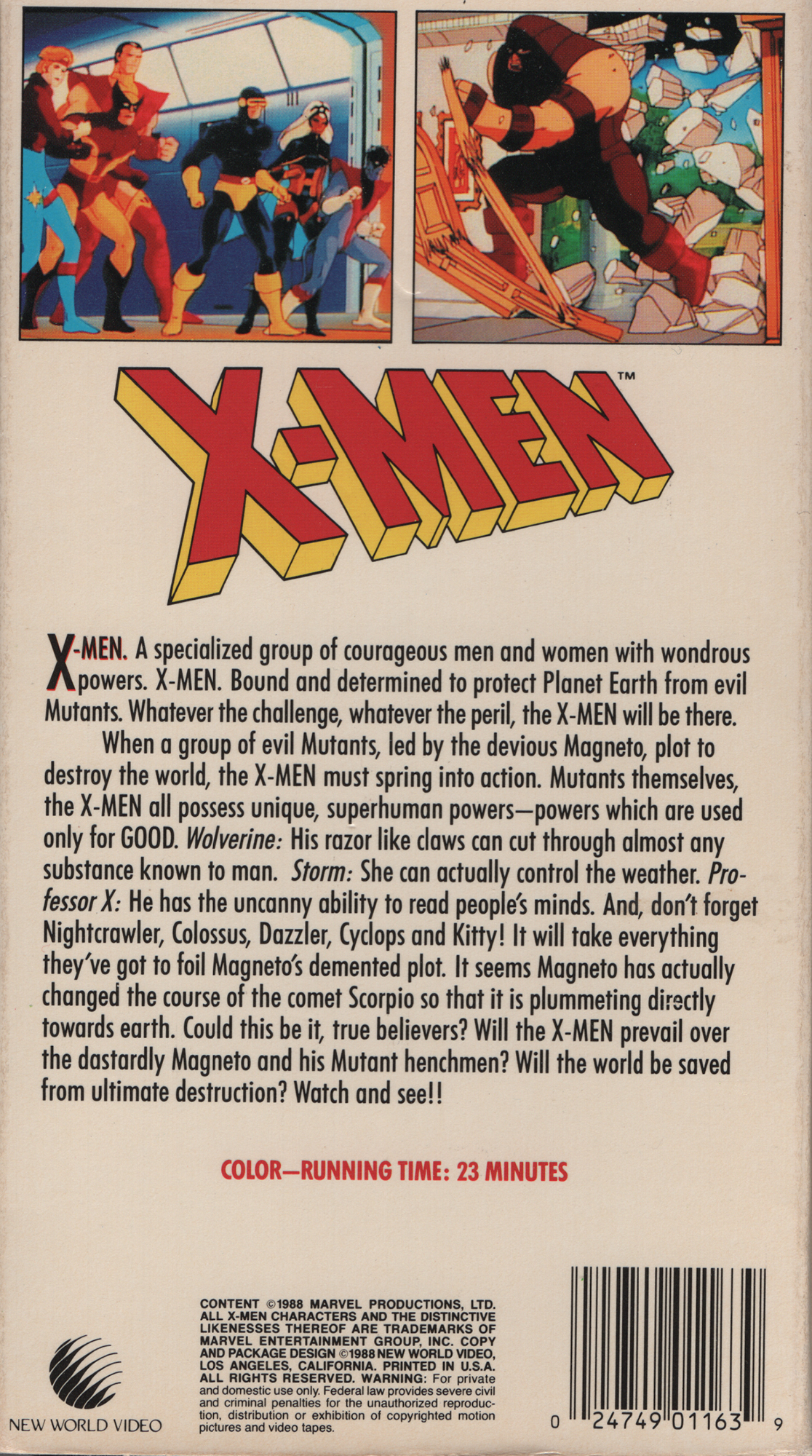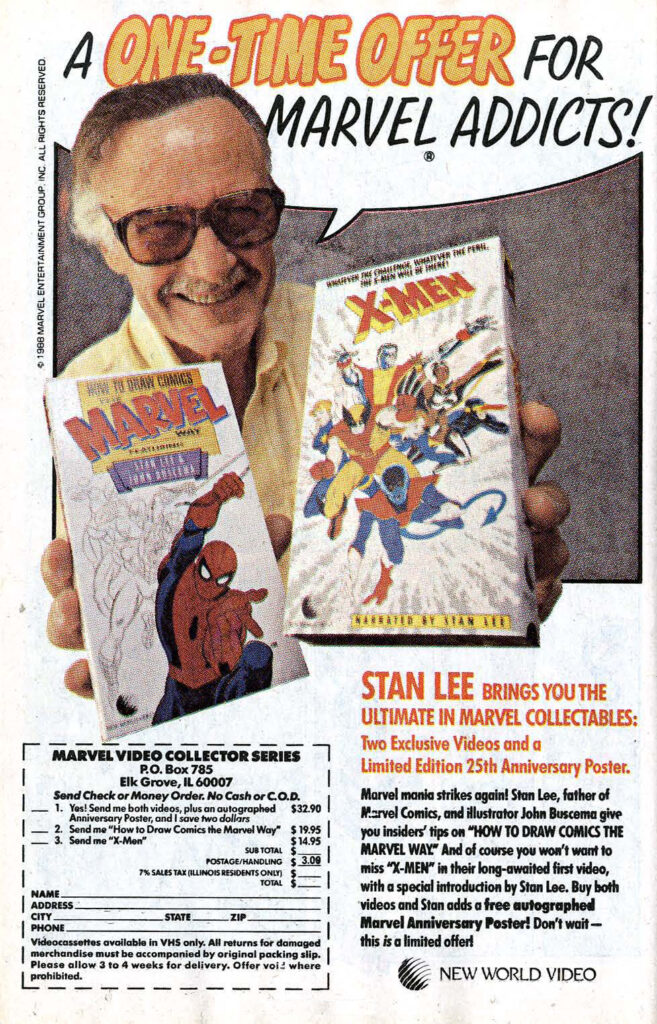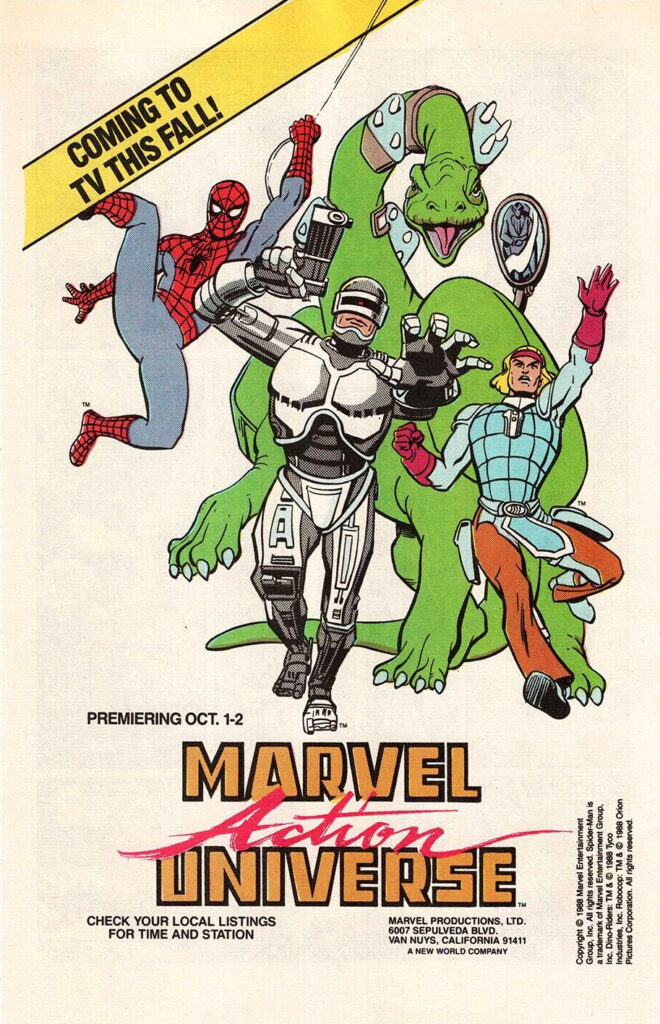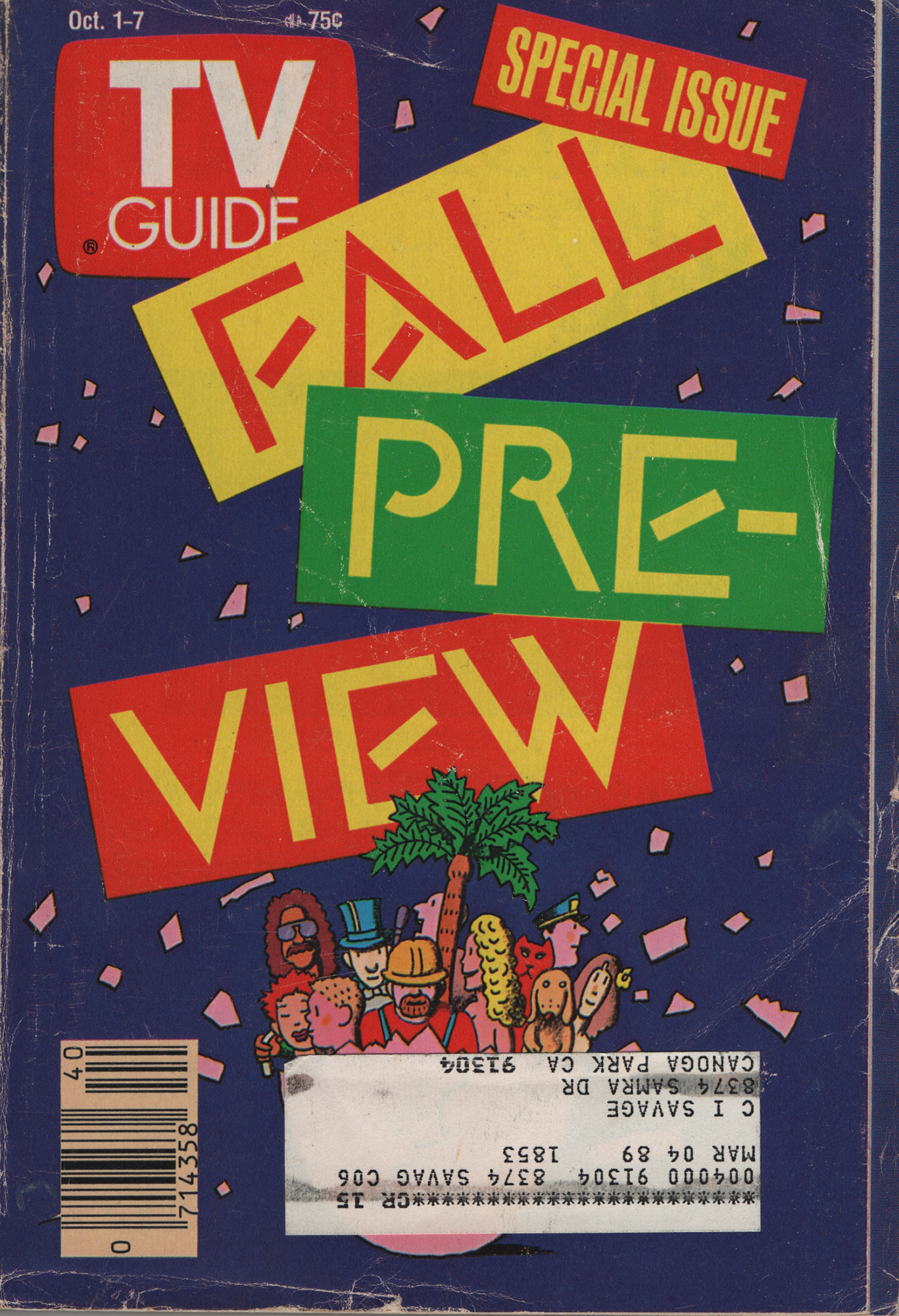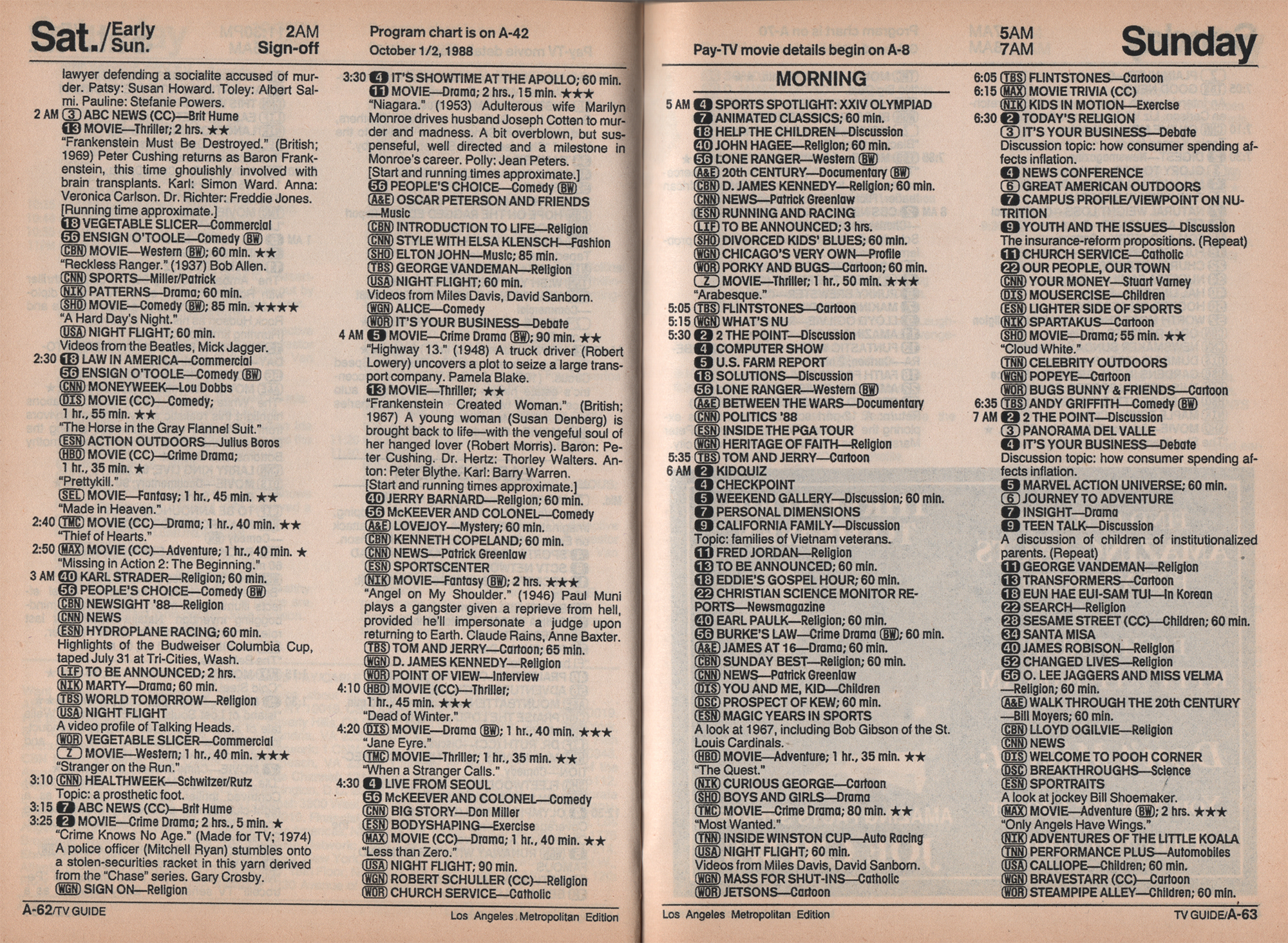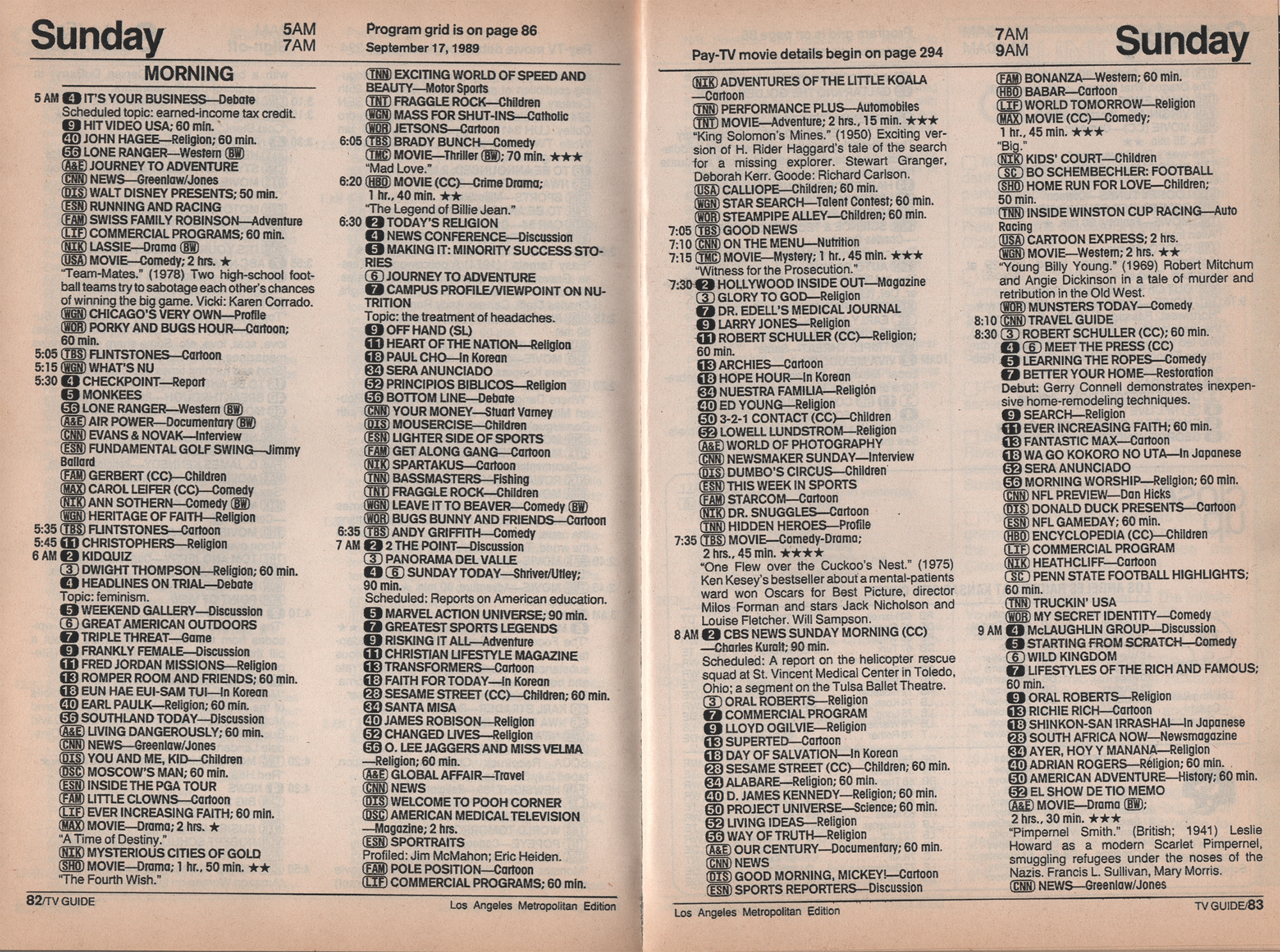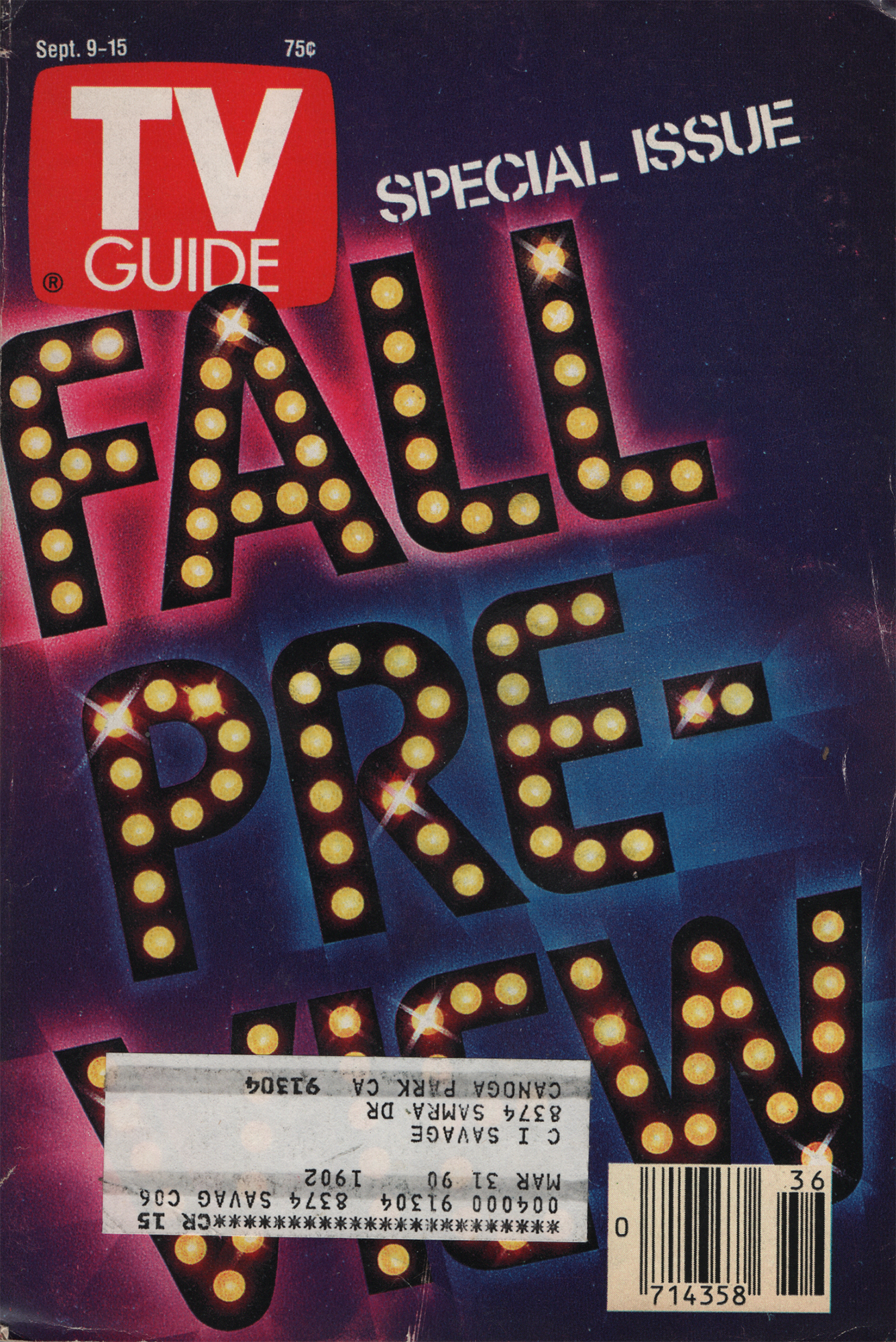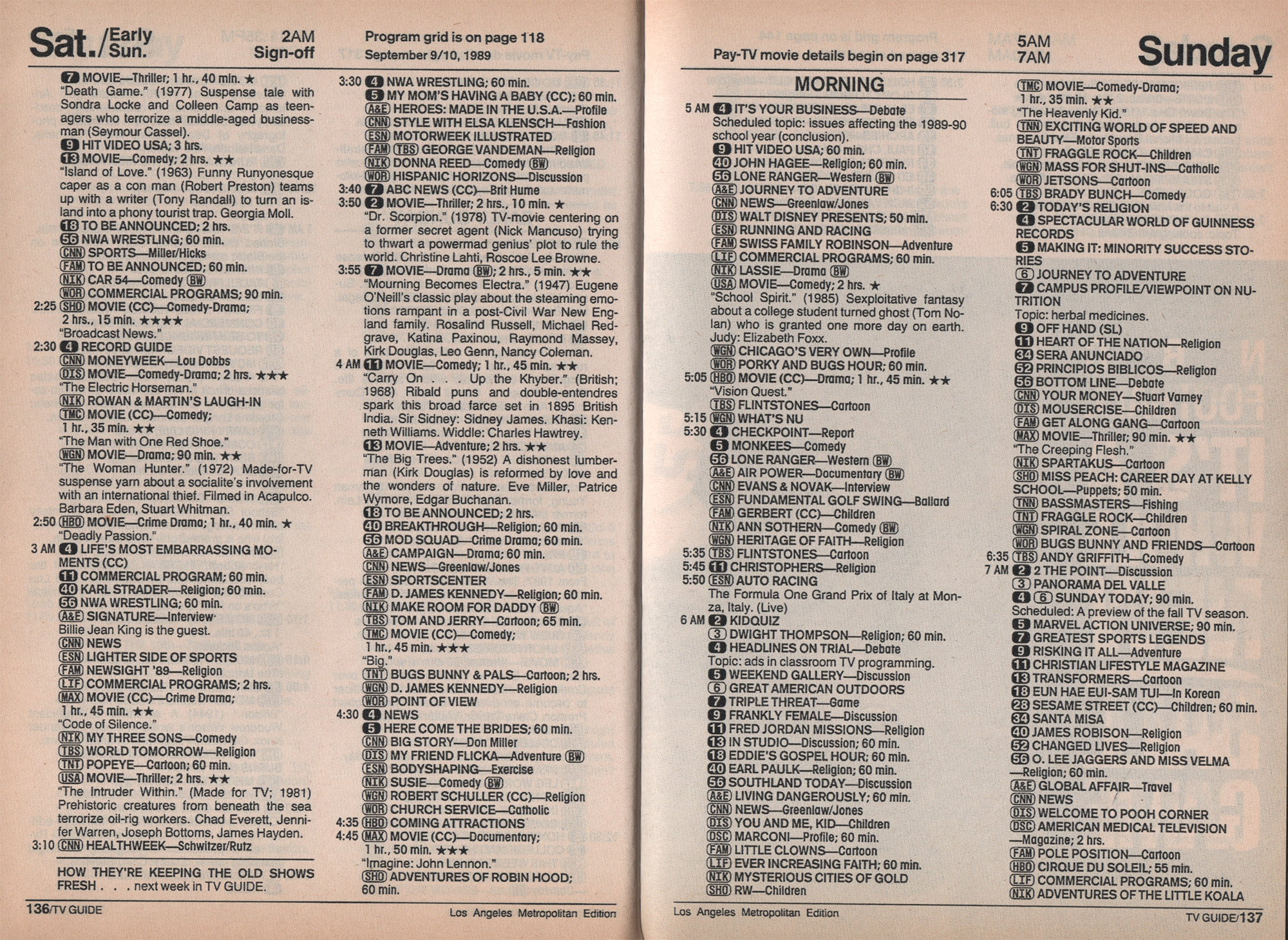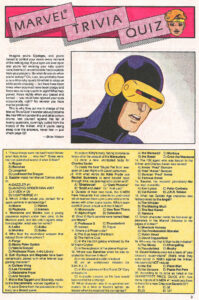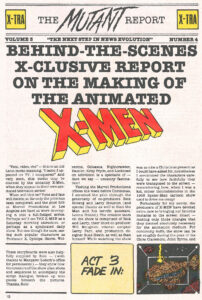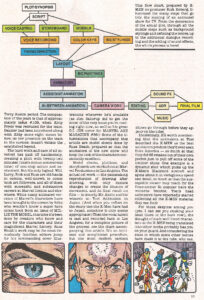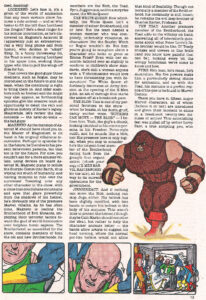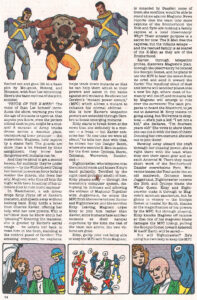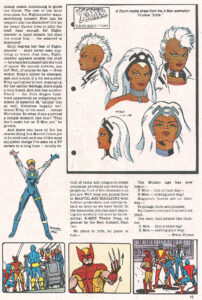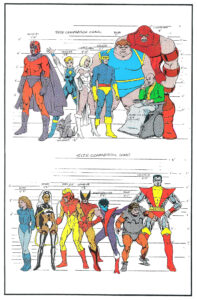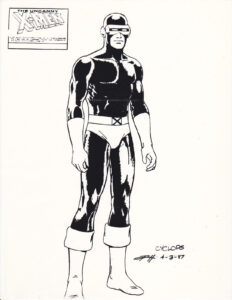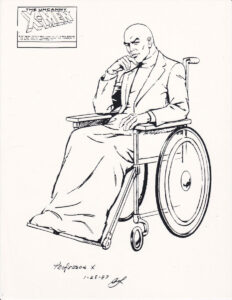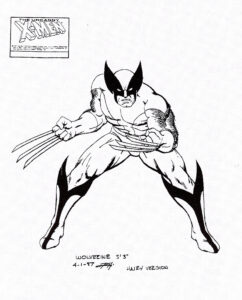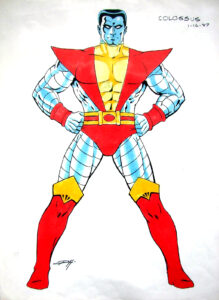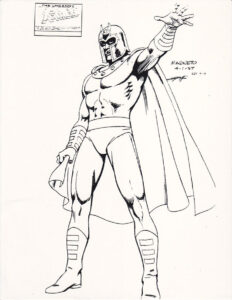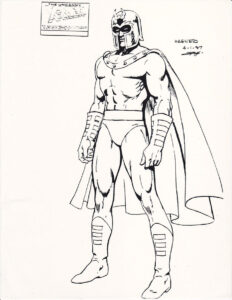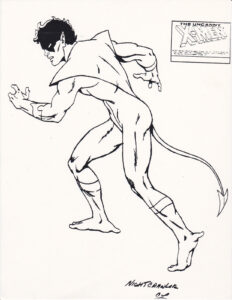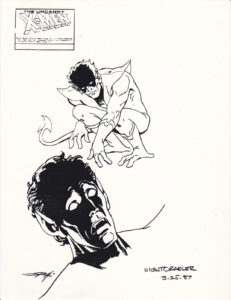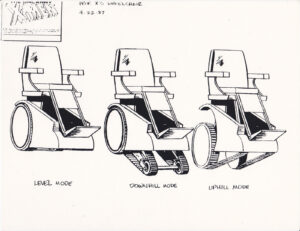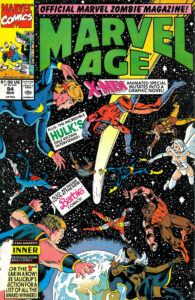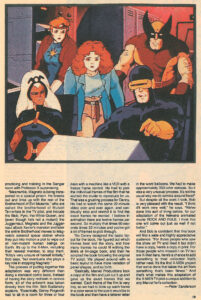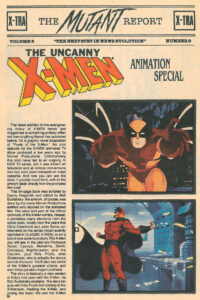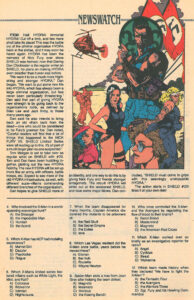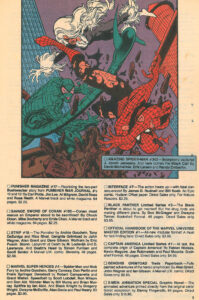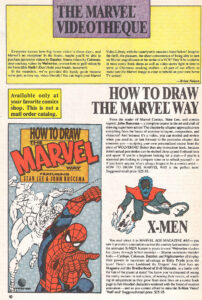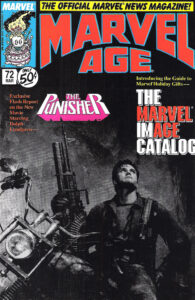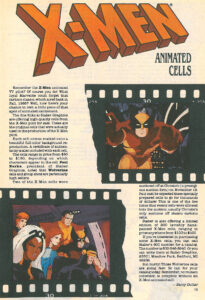Lately, in an attempt to reclaim some “me-time” amidst the hurricane that is raising two young children who monopolize most of my free time, I’ve been staying up late into the evening watching YouTube and thinking about writing. This is becoming, sort of, a ritual now. Get the kids to bed by 9:00 pm, knock out some chores for an hour, and then retire to the home office I share with my wife to vegetate and queue up some videos from the folks at Geekster Vision (formerly The Retro Network), The Soda Jerk, Cereal Geek TV, Brave New Weird, or Dan Larsen’s Secret Galaxy. It was while watching one of Dan Larsen’s Secret Galaxy videos recently, one that featured the bumpy story of Marvel Productions first attempt at launching an X-Men animated series with the pilot, Pryde of the X-Men, that I started to think about how the story of pop culture is malleable. It’s susceptible to constant reinterpretation and it’s extremely hard to nail down provable facts. I also started wondering about the importance of digital platforms, and whether there’s a responsibility to get the facts straight before launching these missives into the ether.
Before I get into it, I want to say that I really enjoyed Dan and his producer Greg’s episode on Pryde of the X-Men and think the duo are doing great work when it comes to digging into 80s and 90s era nostalgia and pop culture. I’m not slamming Dan or Greg, or think they did Pryde of the X-Men some sort of disservice or something dumb like that. In fact, their video probably brought way more eyes to, or back to, that pilot episode than its seen in years and that is awesome. But there was one small tidbit in the video that gave me a moment of pause, as Dan related that the pilot episode was released on VHS in 1991. “But it was released in 1988…” I thought to myself. After finishing the video, I felt obligated to leave a comment mentioning the prior VHS, and immediately deleted it because even though I was trying to do my best not to sound like the “Well, actually…” guy, I think a comment like that pretty much always comes off as the “Well, actually…” guy. If I can “well, actually” myself, this article is probably just 3,000 words of, well, “well, actually.”
- 1991 Best Film & Video Corp. VHS Release
- 1991 Best Film & Video Corp. VHS Release
- 1991 Best Film & Video Corp. VHS Release
- 1993 Best Film & Video Corp. VHS Release
- 1993 Best Film & Video Corp. VHS Release
- 1993 Best Film & Video Corp. VHS Release
This thing is, that Pryde of the X-Men was released on VHS in 1991 by Best Film & Video Corp. (and again in 1993.) But it was also released on VHS in 1988 by New World Video, which is the version I first stumbled across it at my local Blockbuster Video and then would later see on shelves in comic shops I frequented. It’s also the one version that had a cheerleader of sorts, but I’ll get to that in a second. Over the next hour or so I did a couple of things. The first was to rush over to eBay to see if I could find a copy of that original 1988 release (to go with my two other VHS copies), which I did, only it was listed for $1,000 (which is insane.) Searching “Pryde of the X-Men VHS” at the time only brought up this one copy of the ’88 release. Undeterred, I broadened my search to X-Men VHS, and a few hundred listings into my search I stumbled on a pristine copy of the release that was listed under the cassette’s tagline, “X-Men Whatever the Challenge, Whatever the Peril, The X-Men will be There!” See the original paper sleeve and videocassette weren’t labeled with, or even mention, the episode title of “Pryde of the X-Men”, they both just have the X-Men logo and the tagline. So, for $10 I was able to finally get a copy of this coveted VHS.
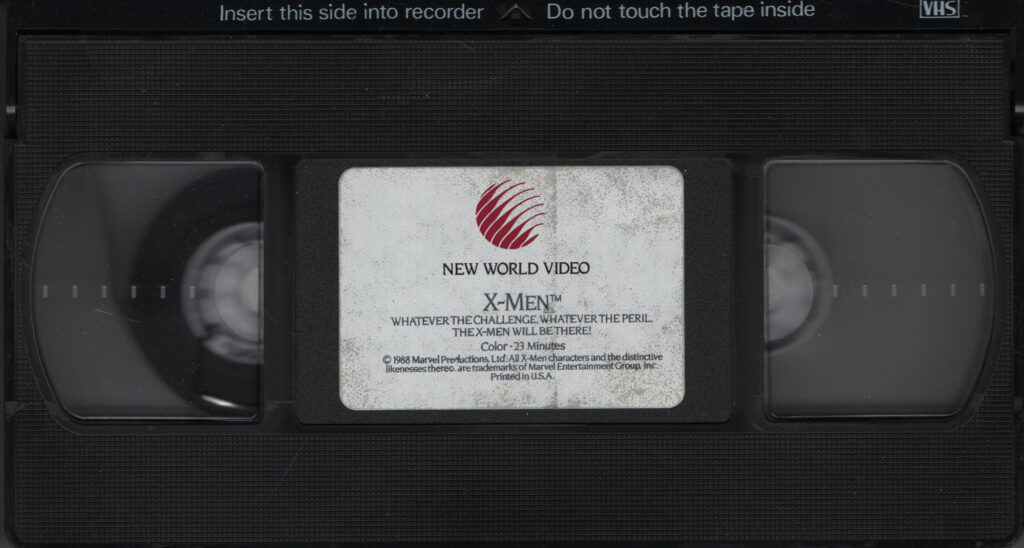
Now, as far as nailing down the release date of this first VHS there are a few things to consider. First and foremost, the tape itself is labeled with a 1988 copyright date. But beyond that, there are some other context clues surrounding the release of Pryde of the X-Men. Most famously there is an ad that ran in all of Marvel’s comics in their 3rd quarter (April to June) 1989 issues featuring the smiling mug of Stan “The Man” Lee holding the above VHS tape as well as the How to Draw Comics the Marvel Way videocassette. The ad carries a copyright notice for 1988 (as opposed to 1989 when these comics hit newsstands.) But, if you’re at all familiar with how comics are printed and solicited, the cover dates are misleading as those April comics were solicited (offered for sale to comic shops via Diamond Previews or other distributors) in November of 1988, then shipped at the beginning of January of 1989, they hit stores on Tuesday, January 31st, and were to be displayed on Wednesday, February 1st. So that physical tape certainly existed prior to 1989 as the photo shoot for the ad was done before the editing, printing, and shipping of the comics it was displayed in. On the assumption side of things, I guess that this mail-away offer for the videocassettes was also not the first time these tapes were sold, as I’m positive they were offered to video rental stores before being sold straight to the public. As a side note, if you’re curious about what that 25th-anniversary Marvel poster from the advertisement below looked like, click here. It’s probably just me being the x-men-obsessed super fan that I was for my teenage years, but this advertisement felt like it was a very well-known thing. Maybe it’s just that I was in the prime of my initial comic book reading and collecting days when it hit, but I felt like it was everywhere.
The second thing I did after finishing Dan’s Secret Galaxy video was to start thinking long and hard about the information we put out as creatives providing commentary on pop culture. Sure, there was a VHS release of this pilot that Dan or Greg left out or missed during their research, but is it a big deal? Well, no. Honestly, no, it’s not. But I know how it feels to miss a piece of information like this in the writing that I do for this site and back when I was writing Branded in the 80s. There are definitely times when I’ve written off the cuff and didn’t take the time and effort to dig deep and missed things that later I’d wished that I’d included. Similarly, there are times when I have done heavy research on a topic, burnt out, and found it easy to just rely on Wikipedia entries or IMDB trivia to finish a piece. Having never vetted that information, I found that I’d trusted those sources too much and ended up spreading false information.
It’s a weird thing, especially since most of us aren’t professional journalists and we’re doing this pro bono. Where is the line in the responsibility of the factual correctness of the information we’re putting out there? The thing is, when some of these inaccuracies get repeated over and over it becomes very hard to figure out what is fact and what is fiction. Since I realized that I had an insight into the release of Pryde of the X-Men on VHS that Dan and Greg may not have had, it spurred me to start digging a little deeper into the story behind the pilot and that first video release. Naturally, I started my search on Wikipedia where I noticed that the entry echoed a lot of the facts in Larsen’s video, some of which were new to me. So this sent me deeper down a particular rabbit hole, specifically looking into an anecdote about the budget for the pilot being derived from shaving off the final episode of the Robocop the Animated Series (which Marvel Productions was also responsible for producing.) By ending the Robocop series at 12 episodes as opposed to the more typical 13, there was room to produce a single episode of a proposed X-Men series, and since I knew that both Robocop and Pryde aired during the Marvel Action Universe block of programming, it made sense.
The thing is, I’m not convinced that this was the case, that the production of Pryde of the X-Men had anything to do with Robocop the Animated Series. I mean, I’m pretty damn certain it’s not the case. First off, there were two main shows produced for the Marvel Action Universe, Robocop and the Dino-Riders. In 1988 these two series played back-to-back in a 60-minute block on Sunday mornings on NBC affiliates (see the above TV guide scan). In 1989, the block was extended to 90 minutes and re-runs of Spider-man and His Amazing Friends were added to the line-up. Supposedly, it was in this 90-minute block that Pryde of the X-Men debuted (as it’s listed as airing on September 16th, 1989 on both the Wikipedia and IMDB pages for the pilot.) All of these facts kept spurring my curiosity, like how are we so sure that Pryde debuted in 1989 and not 1988? How do we know it aired on September 16th specifically?
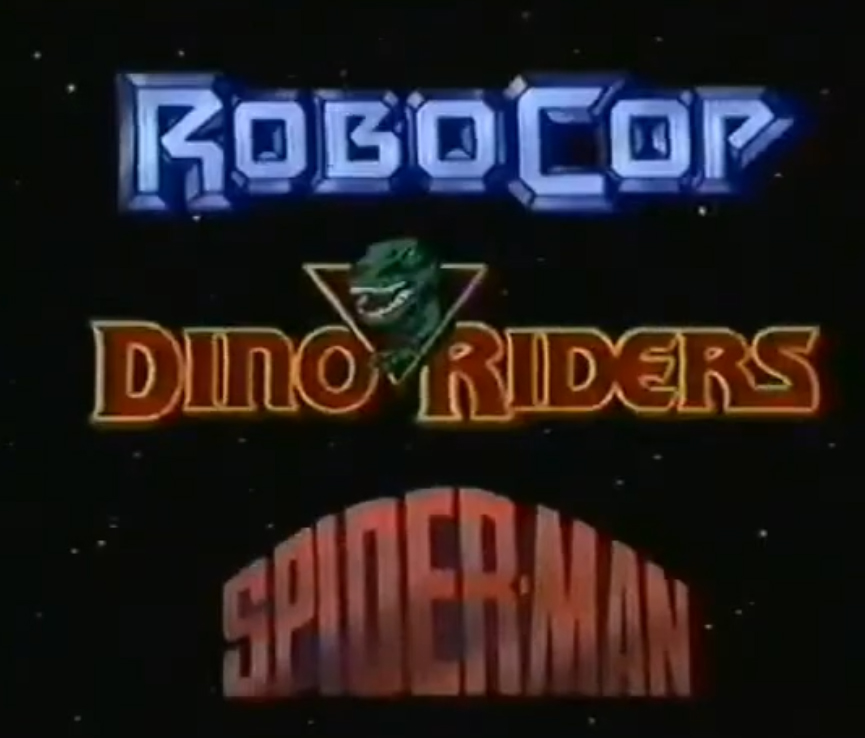
My next step was to dig into my physical archive to pull out some copies of the TV Guide. Though I hardly have a full set (like Frank Costanza on Seinfeld or Grandpa in the Lost Boys), I do happen to have all of the Fall Preview issues from 1977 through 1999 that I snagged off of eBay almost 20 years ago. I did a quick google image search for the September 16th 1989 issue of the Guide and recognized the cover as the addendum Fall Preview issue with Roseanne Barr and Bill Cosby adorning the cover (it’s one of the few years that were so full of new productions and news that TV Guide broke it down over two issues.) I knew I had that in my collection, so I was floored. Maybe I could find some evidence for at least one of these facts that was eating away at my brain.
Scanning the listings on Saturday morning, the 16th of September, I spotted an entry for the Marvel Action Universe on channel 11, the local California Fox affiliate at 6:30 in the morning. Weirdly though, it was only for a 30-minute block, as it listed Denver the Last Dinosaur playing at 7:00am on the same channel. The MAU was supposed to run for 90 minutes in ’89, so I flipped over to the listings for Sunday morning out of curiosity and trying to be thorough, and lo and behold, at 7:00 am on channel 5 (an Independent, non-network station), the 90-minute version of the Marvel Action Universe was listed. Sadly, neither entry dug deeper into what episodes were actually playing as there was no description. Breaking out this TV Guide only made the mystery deepen. Why was the MAU playing on multiple stations on both Saturday and Sunday? Was the Saturday entry a special presentation of Pryde of the X-Men? Since I also have the previous week’s issue (the main Fall Preview for 1989), I checked to see if this dual station airing over two days was repeated. But it was only listed as the 90-minute block on Sunday at 7:00 am on channel 5. The context clues here suggest that the September 16th listing might just be a one-off airing of Pryde of the X-Men, but it’s hardly conclusive.
But getting back to the idea that Pryde was linked to the budget of the Robocop the Animated Series, I asked myself, how do I figure out if the Marvel Production crew robbed an episode of Robocop to pay for the X-Men pilot? The context clues suggest that the production of Robocop (which debuted on Sunday morning, October 2nd in 1988) was cut short so that Pryde could be developed to air the following year (in September 1989.) So, I started scouring the internet for anything that attached Robocop the Animated series to Pryde of the X-Men. I was hoping to find some vintage articles detailing the behind-the-scenes trade-off, but everything that I found online was just folks parroting the anecdote in modern pieces written over the last six or seven years. Then I started hitting up my archive of magazines looking for any information that covered the production of either Robocop or Pryde of the X-Men. Though I came up empty on Robocop, I managed to find a few pieces detailing Pryde’s production. Specifically, there’s an issue of Marvel Age (number 63 from June 1988 which actually hit newsstands in April of ’88), that goes into some pretty decent detail. Nothing is mentioned about finding funding from the Robocop animated series budget, but there are clues that the production of Pryde was happening in tandem with, or more probable before Robocop. The author of the piece, Brian Nelson, mentions that he managed to secure a screening of the X-Men pilot in December of 1987, and there are included model sheets from the series bible that were commissioned from artist Russ Health and are labeled as being done in April of 1987. That’s a full three months before the Robocop movie even hit theater screens, let alone the cartoon that came later. I’ve also been able to source model sheets by Heath (which were listed by Heritage Auctions) that are dated back to January of 1987.
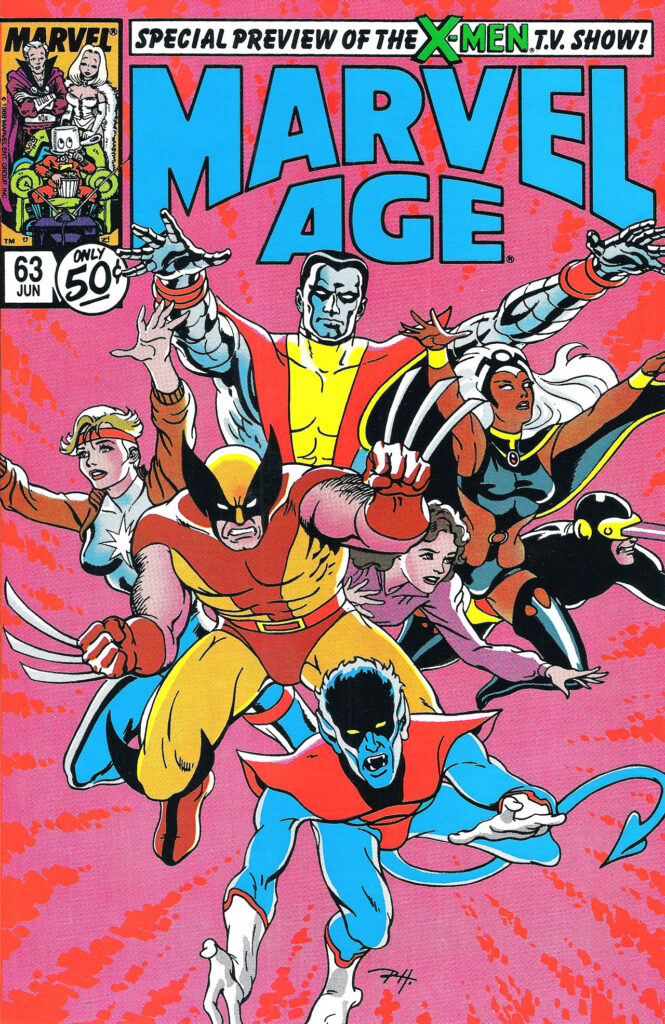
- Model Sheets
Considering that the episode was finished and ready for in-house and press screenings in December of 1987, and that the design phase started as far back as January, I think the idea that the budget was snaked from Robocop the Animated Series just doesn’t hold any water. Though I’m sure wheels were turning about all of the the possible ways of marketing Robocop before the first film hit theater screens (there were already a Marvel comic film adaptation illustrated and a novelization written), I doubt that a full cartoon series was already in the works during the beginning of 1987. The fact of the matter is that Pryde of the X-Men was already in production at that point, way before Robocop the Animated Series would have been green-lit. Doing some deep digging, this Robocop connection anecdote can be traced back online to October 25th of 2011, at least as far as the Pryde of the X-Men Wikipedia page is concerned.
That’s the day when the page was updated to add that bit of information by user BornonJune8 (I checked the edit versions before and after that date and the only piece of information that was changed was adding the Robocop anecdote.) Then, seven and a half years later, the same user would add the same anecdote to the Robocop the Animated Series page (on May, 17th 2019), though in that case it was slapped with a “citation needed” claim that same day. This same user also took a shine to the Pryde of the X-Men page, updating or changing information 37 times between 2010 and their latest in 2020. But for the life of me, I can not find anything that would lead to why this user made this specific edit on the Wiki page or who they even are. Are they just a fan with a wild assumption that they see as fact? Did they work on the Robocop cartoon? Are they a disgruntled writer or producer who are still butt-hurt over the fact that the series only had 12 episodes produced? Are they Robocop?!? “Murphy, It’s You!”
Here’s another problem with the whole “Robocop only had 12 episodes, so therefore…” thing, no one has mentioned (on wiki pages, fan-sites, etc) that Dino-Riders had a suspicious 14 episodes produced. You see, for Saturday morning cartoons (or Sunday in the case of the Marvel Action Hour), the episode order was typically in increments of 13 because there are 52 weeks in the year. 13 episodes can be run exactly 4 times a year. It’s also why weekday shows have orders of 65 episodes, because there are 260 weekdays in a typical year (5 a week for 52 weeks), so 65 episodes can be shown 4 times. So while it’s weird that Robocop only had 12 episodes, it’s just as odd that Dino-Riders had 14. When you consider that the debut season of the Marvel Action Hour was a 60 minute double features of these two series that ran in 1988, well, together they still account for a total of 26 episodes, or the two 30 minute slots that could be shown 4 times in the 88/89 season. Doesn’t it make more sense that Dino-Riders sniped that last Robocop episode? Still conjecture, but I think it’s pretty sound.
With all of the digging I was able to come up with a handful of articles and direct references to the X-Men pilot in issues of Marvel Age (specifically issues 63, 72, 76, 86, and 94), in Eric Lewald’s book Previously on X-Men: The Making of an Animated Series (with literally only a couple of dropped lines mentioning it), Joanna Robinson’s book, MCU: The Reign of Marvel Studios (again a dropped line mentioning the pilot), and as line items in the Comic Scene magazine in their ongoing column “Comic Screen” that attempted to update readers on every single comic book related television or film project made or in production. Though there was a lot of talk about how the then head of Marvel Productions, Margaret Loesch, was having a difficult time getting the studio to green-light an X-Men cartoon, there was no talk of siphoning off the budgets from other in-production series to produce Pryde of the X-Men. If anything, it was just framed as a regular series development, except with only a pilot on the docket instead of a full season as there was no supporting movies or toys to help push the show. So hopefully that puts the Robocop rumor to rest.
Again, to attempt to summarize, where is the line drawn with respect to the responsibility we have as non-journalists to research or fact-check the pieces we write? I love gabbing about nostalgic stuff, all of the stuff that floored me as a kid and that feeds the comfort of my inner child 35 years later. But at some point, the pieces I’ve worked on have seeped beyond the borders of my sites and I’ve noticed them showing up on sites like Wikipedia, IMDB or even as anecdotes in articles written by professional journalists. My intention is to just share things I love and to start conversations, but when does this stop being a hobby and start having some sort of responsibility. Is it on me to label everything very clearly as an editorial? When do we stop treating user-driven sites like Wikipedia as an actual vetted encyclopedia? There are so many of us armchair journalists, be in on blogs, podcasts or creating youtube videos, that it almost feels like doing this, isn’t just about having fun and shrugging our collective shoulders when we put out incorrect information into the ether.
As a bonus, and while I’m on the subject of Pryde of the X-Men, you might be asking yourself, why does Shawn even care about the fact that there were three VHS releases and not just two more widely talked about? Well, each one is a little different, and not just in physical appearance and title. Though it’s sad that this wonderful pilot for an X-Men series that never happened isn’t preserved in a nice digital format like DVD or Blu-ray, it’s even sadder that there are multiple versions of the cartoon itself. The original version distributed by New World includes a series of act breaks and continuing narration by Stan Lee through the episode. In the two later releases the act breaks were edited out, and since they fell across scenes in progress, chunks of the episode were cut out completely including the narration by Stan Lee in these transitions. So you only get the opening and closing bits. The cut scenes are not super important, but there are dropped lines of dialogue from the characters that explain a few things here and there. So the only way to see the fully intact version of the episode is on that original release.

Similarly, if you’re like me and have watched these actual VHS tapes multiple times, then you know they kick off with Marvel-branded commercials that feel like a part of the presentation. Did you only watch the 2nd release with the Arthur Adams cover? Then you’re probably intimately familiar with Spider-man trying to convince you to vote! If you picked up the 3rd release with the more accurate team line-up (and Wolverine in the episode accurate orange and brown costume) then you probably remember this Spider-man video game commercial as well as the voting ad.


